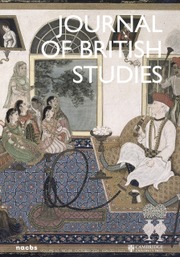After something of a lull, the study of the Codex Amiatinus—the great single-volume Bible produced c. 700 in Northumbria and arguably one of the greatest of English books—has recently come alive again, most notably with Richard Gameson's Jarrow Lecture (Codex Amiatinus: Making and Meaning, 2018) and a monograph by Celia Chazelle (The Codex Amiatinus and Its “Sister” Bibles: Scripture, Liturgy, and Art in the Milieu of the Venerable Bede, 2019). Edited by Jane Hawkes and Meg Boulton, All Roads Lead to Rome makes a further contribution with twelve high-quality essays deriving from a conference held to commemorate the 1300th anniversary of the departure of the Codex Amiatinus from England to Rome, as a gift to the pope, in 716.
The evolving study of this iconic book is itself the subject of the opening essay by Hawkes, in which she traces the pioneering work of an early scholar who applied the methodology of art history to the celebrated series of painted miniatures and diagrams that fill the opening gathering of the codex, at the same time confirming its identity as one of three such pandects of the Bible commissioned by Abbot Ceolfrith at the twin monastery of Wearmouth-Jarrow. Eight of the essays are devoted either to these illustrations or to the depiction of the Maiestas Christi (Christ in Majesty) that is painted on a leaf between the texts of the Old and New Testaments. Spread across two pages of the opening gathering is a plan of the Tabernacle and two essays focus specifically on this. Thomas O'Loughlin highlights the image's sacramental dimension. For him it is both a “liturgical object” and “an object for exegetical reflection” (102) by the Wearmouth-Jarrow monks, for whose use (as Bede tells us) the two other copies of the pandect had been placed in the monastery's two churches; this presumably implies that all three of the pandects carried the illustration. The Tabernacle plan includes the inscription Moses et Aaron, and Conor O'Brien links this with the writings of Bede and a letter from Pope Gregory II to suggest a deliberate reference to, and endorsement of, the potentially problematical abbatial succession at Wearmouth-Jarrow in 716, when Ceolfrith was succeeded by Hwætberht. He suggests therefore that the Tabernacle bifolium was a late addition to Amiatinus, made just before it left for Rome. This seems to undermine O'Loughlin's speculation, unless we assume that the Tabernacle illustration was simply modified for Amiatinus itself. Meg Boulton looks at this illustration also, but in conjunction with a miniature of the prophet Ezra and the Maiestas. She shows all three to be “multivalent and exegetically sophisticated,” and integral to a codex in which all the parts contribute in presenting a coherent idea of the universal church (48).
Georgia Michael uses the Maiestas and other illustrations to explore how the concept of divinity, especially God the Father, was envisaged at Wearmouth-Jarrow on the eve of the great iconoclastic debates of the eighth and ninth centuries. N. G. Baker examines the evangelist portraits that fill the four corners of the Maiestas, in part using evidence from recent ultra-violet imaging of the manuscript. Chazelle adds substance to the (almost) universally held view that the artwork of Amiatinus was influenced by the Codex Grandior of Cassiodorus (a great pandect acquired by Wearmouth-Jarrow), but she also speculates that some of the iconographic choices made in that artwork (such as the representation of the structure of the universe) might be seen as a response by Bede to a sixth-century Greek work on cosmology. An interesting approach is taken by Carol A. Farr, who notes the great care taken by scribes in writing the inscriptions on the various illustrations in the first gathering, especially in respect of word separation, and compares them with contemporary inscriptions on stone monuments. She believes that a Roman audience of the codex would have been impressed by the “exceptionally learned and innovative” appearance” of the inscriptions (76).
The prestige of Wearmouth-Jarrow in the eyes of Rome is the subject also of Alan Thacker's essay. He shows how, in a rare surviving letter, Pope Sergius (a predecessor of Gregory) solicits Ceolfrith's support for his handling of a recent doctrinal schism, thus indicating the esteem in which the abbot and his community were already held by about 700. It is good to be reminded in one essay that, as a thousand-leaf Vulgate Bible, the Codex Amiatinus is of textual interest also. H. A. G. Houghton uses newly available computerized data to offer statistical confirmation of the long-held view that the source of the Gospel text in this and of other Northumbrian biblical manuscripts was an exemplar originating in the Naples area of Italy. It was to Italy, as we have noted, that the codex was eventually “returned,” so to speak (thus escaping the oblivion awaiting most Anglo-Saxon manuscripts). The details of its life there are little known, but it left Rome and for hundreds of years was kept in the monastery of San Salvatore at Monte Amiata in Tuscany. Linda Yawn presents evidence that, while it was there, some of its graphic decorative features may have influenced the scribes of a small Umbro-Tuscan group of the so-called Italian Giant Bibles of the eleventh to fifteenth centuries.
An essay by Mary Garrison is especially satisfying. In medieval scholarship, speculation all too often morphs into unchallenged assumption, which in turn becomes the basis for further speculation. One long-held assumption is that, because two Latin verses inscribed above a miniature in Amiatinus occur also in a poem by Alcuin, the latter must have seen the verses at Wearmouth-Jarrow. Garrison's meticulous research shows that none of the arguments on which this idea has been based stands up to scrutiny. While it remains possible that Alcuin did indeed take the verses from Amiatinus, it is just as likely that he found them in a miscellany of some sort. This is a salutary lesson for us medievalists who are tempted to overinterpret flimsy and often purely contingent evidence.



